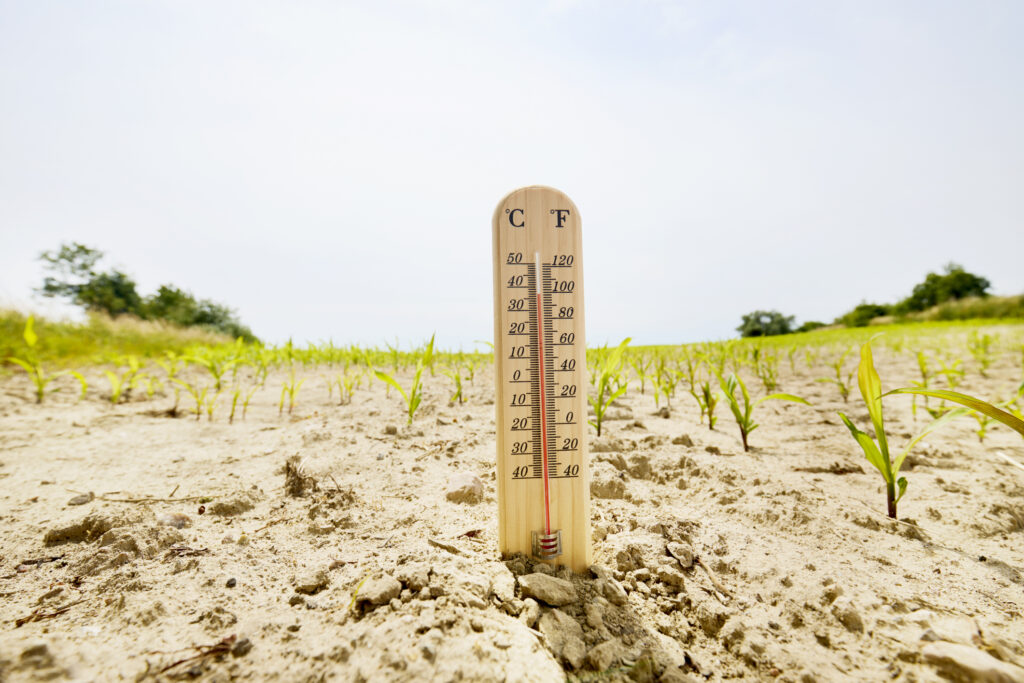British journalist Tim Montgomerie wrote October 18, 2014 for The Times “Our energy policy is insane: this the inconvenient truth“. The article described the plight of those in the United Kingdom saddled with energy policies that takes money from poor pensioners and gives it to wealthy landowners who profit from wind farms. The nation is left with an unreliable energy system that produces no reductions in carbon dioxide emissions and leaves the country with a reliance on odious oil and coal exporting regimes. He also said, “There’s always been a lot of money to be made from exaggerating danger and selling fear.”
A portion of his article applying to the United States read, “The real casualties of the West’s green policies aren’t the poor in this country but in the developing world. Aid money that could be going to tackle malaria or to build a health infrastructure capable of containing Ebola often goes to dubious green projects. Barack Obama has stopped US aid from helping build any new coal-fired power plants. This policy will literally kill people. The alternative to fossil fuels for many poor nations isn’t expensive renewable energy but no fuel at all. And no fuel at all means no refrigeration for medicines in health clinics and no warmth for very poor families on freezing nights.”
A June 29, 2014, article in Forbes “Electrify African and Save Hundreds of Millions of Lives” by Jude Clemente quantifies the tragedies of life living in Sub-Sahara Africa because of electricity shortages. One factor for shortages is the environmental movement’s demands electricity generation fossil-fuel free. Of particular interest is the table Africa’s Forgotten Calamity: Electricity Deprivation which shows President Obama, Secretaries of State Clinton and Kerry, and former Vice President Gore making speeches in Africa referencing global warming and failing to mention problems of electricity shortages.
Seventy percent of the people in Sub-Saharan Africa are without electricity and thus denied access to clean water and sewage treatment, refrigeration, lighting, healthy cooking, enclosed homes with heat and air conditioning, etc. that follows from adequate electricity supply. The banning of DDT in Africa allows the spread of malaria throughout Africa with hundreds of millions sickened and annual deaths estimated at over 600,000.
CAUSE FOR INSANITY
Environmentalists within the Democrat Party like Al Gore and Tim Wirth subscribed to catastrophic anthropogenic (man-made) global warming (CAGW) in the late 1980s. CAGW is caused by increased atmospheric carbon dioxide coming from the burning of fossil fuels oil, natural gas, and coal. They gained further support after the United Nations formed the United Nations Intergovernmental Panel on Climate Change (UNIPCC) which produced a series of 5 Assessment Reports released since 1990 with the most recent in 2014. These documents are accepted without question. CAGW proponents argue increased atmospheric carbon dioxide has caused increased heat waves, record high temperatures, flooding, drought, wildfires, reduced snowfall, tornadoes, hurricanes, sea level rise, Artic ice melting, etc.
PROOF IT IS INSANE
A host of data shows all catastrophic events allegedly caused by CAGW occurred in the past when atmospheric carbon dioxide levels were lower and constant. For many weather events, rates of occurrences recently declined. The U. S. government provides data on various climate events CAGW proponents claim are increased– heat waves, record high temperatures, flooding, drought, wildfires, reduced snowfall, tornadoes, hurricanes, sea level rise, and Arctic ice melting. Inspection of data shows CAGW claims are false or exaggerated. Omitted from the data released by climate alarmists is satellite global temperature data show there has been no global warming since the super El Nino in the Spring1998. Some may protest global temperature data from NOAA and NASA GISS claim 2014 monthly temperatures were highest in recorded history. Their data has had adjustments producing higher temperatures that are shown false. Another factor omitted is Antarctic sea ice in September 2014 is at the highest level since satellite measurements started in 1979.
Due to the lack of global warming since 1998, those pushing this insanity have changed CAGW to catastrophic anthropogenic climate change (CACC). Along with this mislabeling, carbon dioxide emissions from burning fossil fuels are now labeled by the EPA and President Obama as “carbon pollution”. Carbon pollution conjures up images prior to the 1960s when coal was burned without environmental controls in electric power generation, train transportation, city-operated district heating systems, and home heating and cooking with vast amounts of soot strewn over snow in the winter, laundry dried outside, and cars parked outside. In reality carbon dioxide emissions from burning fossil fuels is a positive benefit to society as explained by Princeton University Emeritus Professor William Happer in his October 15, 2014 lecture “The Myth of Carbon Pollution“. Increased atmospheric carbon dioxide is an airborne fertilizer that causes increased plant growth, larger plant root systems that decrease plant water demands, and decreases in plant water expiration which also decreases plant water demands. The slight increase in global warming by increased atmospheric carbon dioxide is a positive benefit producing longer growing seasons.
A report on social benefits of carbon dioxide for agriculture alone is estimated at $3.2 trillion from 1961 to 2011. Benefits from 2012 to 2050 are estimated $9.8 trillion. These economic benefits from increased atmospheric carbon dioxide make any suggested economic benefits from carbon dioxide curtailment by the EPA, President Obama, or others irrelevant.
Carbon dioxide measurements show increasing amplitude of annual changes over the four seasons with increasing carbon dioxide levels. This indicates annual increasing global plant material. The ‘greening’ of the planet allows less land area required for human subsistence and more space returned to ‘Nature’. The 90 part per million increases in atmospheric carbon dioxide since 1950 may have enabled the planet to feed the huge population growth from 2.5 billion in 1950 to over 7 billion in 2013.
U.S. RESPONSE TO INSANITY
Books are written on responses to reducing carbon dioxide emissions. A few examples follow.
The first major response to increased atmospheric carbon dioxide may be traced back to the 1989 presidential initiative U. S. Global Change Research Program (USGCRP) which evolved into one of the largest programs pursued by U. S. government. Thirteen departments and agencies participate in USGCRP. The original program sponsored research on global warming and has now evolved into research supporting proof of CACC, pursuit of renewable energy programs, and eliminating fossil fuel energy use.
Renewable energy programs started in the U. S. after the 1973 Oil Embargo threatened the nation with severed overseas oil supply and fears of running out of fossil fuel energy sources. This led to development of solar and wind for electricity generation, solar heating, biomass (wood or waste materials) as fuels for electricity generation and heating, and renewable fuels chiefly ethanol from corn called “gasohol“. The EIA estimates U. S. coal reserves are 481 billion tons which would last hundreds of years. After implementation of hydraulic fracturing, directional and horizontal drilling, and improved oil and natural gas exploration techniques, oil and natural gas reserves are estimated as high as 6.268 trillion barrels of oil. Even if this estimate is reduced by an order of magnitude, U. S. oil reserves will lasts hundreds of years. Thus renewable energy demand due to fossil fuel depletion has completely disappeared.
Proponents of renewable energy sources have seized CAGW (or CACC) as reasons to pursue these resources because of alleged reductions in carbon dioxide emissions. Solar and wind eliminate fossil fuel use for electricity production. Biomass and biofuels require atmospheric carbon dioxide for their creation; so their use is alleged to not contribute to further increases in atmospheric carbon dioxide due to carbon dioxide requirements for their replication. On an energy comparison (Btu of fossil fuel vs. Btu of renewable energy source), renewable energy sources don’t reduce atmospheric carbon dioxide as great an amount as claimed. Large amounts of fossil fuel energy are required to produce renewable energy sources—Cornell University Prof. Pimentel writes it takes 1.29 Btu of energy to produce 1 Btu of energy from ethanol from corn.
The U. S. Energy Information Administration’s “Annual Energy Review” gives data for 2013 renewable energy production with the following percentages: wood and waste(28), hydroelectric (27.5), biofuels (21.5), wind (17.1), and solar (3.3). Renewable energy accounted for 9 % total energy production.
From preceding statements, carbon dioxide causes insignificant CAGW and is an asset in furthering plant growth. This eliminates arguments for renewable energy sources based on carbon dioxide reductions. Renewable energy sources should be as economical as fossil fuel energy sources they replace. Sadly this requirement is not being met.
Due to lack of economic competitiveness, renewable energy sources are subsidized on state and federal level by grants (direct cash payments), tax credits, favorable tax depreciation treatments, mandates for use (renewable portfolio standards), and above value payments by utilities for excess electricity returned to utilities for sale to others (feed-in-tariffs).
Since 1990, the cost to U. S. taxpayers from research attempting to prove CAGW, propaganda promoting CAGW, and carbon dioxide emissions reduction programs like renewable energy sources have to exceed one trillion dollars. Annual costs today must exceed $100 billion. One example of spending is EPA’s grants to a variety of organizations such as governments, businesses, and non-profit organizations called non-government organizations (NGOs). Their database shows grants for the past ten years, including earlier grants that started before that time and still continuing, are 34,208 for a total cost of $58.724 billion. Some information about state subsidies is found in the Database of State Incentives for Renewable Energy & Efficiency (DSIRE) established in 1995. One example is California’s Self Generation Incentive Program (SGIP) designed to fund innovations in clean energy. Since 2001 SGIP has dispersed $977 million.
The Energy Independence and Security Act of 2007 was passed to reduce energy consumption, imported oil, and carbon dioxide emission. The act called for increased Corporate Average Fuel Economy (average mile per gallon for vehicles), improved vehicle technology (electric cars), increased production of biofuels(more ethanol from corn, ethanol from cellulosic sources, and other biofuels), increased efficiency for appliances and lighting(phasing out incandescent light bulbs), energy savings in buildings and industry, and miscellaneous. The portion due to biofuels contained a Renewable Fuel Standard (RFS) which mandates annual increases in biofuel use from 4.7 billion gallons in 2007 to 36 billion gallons in 2022. 21 billion gallons of the 36 billion gallons must come from sources other than ethanol from corn, i.e. cellulosic ethanol and biodiesel. For 2014, the RFS is 18.15 billion gallons.
The RFS was based on assumptions of continued increases in use of gasoline and diesel fuels by more vehicles driving more miles as time progressed. This assumption was erroneous due to fewer miles being driven due to higher cost fuels and, more importantly, new vehicles with substantial better miles per gallon replacing discarded used vehicles. Annual fuel use is constant. An April 20, 2014 Forbes article “It’s Final—Corn Ethanol Is Of No Use” stated in 2014 the U. S. will produce 130 billion gallons of gasoline and 13 billion gallons of ethanol which when blended will make the ten percent ethanol fuel mixture E-10. This is a mixture all cars and two-cycle engines can safely operate. Higher ethanol mixtures may damage cars before 2003 and all two-cycle engines. This mixture is called the Blend Wall because of lack of public demand or need for higher ethanol mixtures. Due to the Blend Wall, EPA reduced the RPS for 2014 to 13 billion gallons of corn ethanol and a total of 15.15 billion gallons. The Forbes article also shows the use of ethanol from corn does not reduce carbon dioxide emissions as a transportation fuel.
The RFS from EISA has built in requirements for unneeded ethanol that demands immediate change. Last December Senators Feinstein and Colburn introduced a bill to repeal ethanol mandates without action. Tax credits have been stopped for 2014 that may slow down unneeded production. This problem deserves immediate Congressional action to stop unnecessary capital investments for unnecessary biofuel facilities that once built may be impossible to close.
It is instructional to look at land requirements of biofuels compared to nuclear, solar, and wind energy on annual energy outputs. Nuclear energy requires 0.61 acres per Megawatt, solar energy requires 7.4 acres per Megawatt, wind energy requires 60 acres per Megawatt, one acre produces 400 gallons of ethanol from corn, and one acre produces 56 gallons of biodiesel from soy beans. The annual energy output for a one acre nuclear plant is 13,000 Megawatt-hours, a one acre solar plant is 240 Megawatt-hours, a one acre wind farm is 44 Megawatt-hours, a one acre corn field is 10 Megawatt-hours, and a one acre soy bean field is 2.3 Megawatt-hours. Thus it may be more practical to devote land to solar farms when producing renewable energy.
Other means of reducing carbon dioxide emissions were imposed by President Obama. Campaigning in San Francisco during the Democrat Party primaries in January 2008, Presidential Candidate Obama told the San Francisco Chronicle editorial board, “So if somebody wants to build a coal-powered plant they can; it’s just that it will bankrupt them because they’re going to be charged a huge sum for all that greenhouse gas that’s being emitted.”
Upon election, President Obama tried to keep his promise with the American Clean Energy and Security Act of 2009, also known as the Waxman-Markey Bill. Among many features of this bill is Cap-and-Trade on carbon dioxide emissions. This put a price on carbon dioxide emissions and gradually reduced allowed emissions until they were 17 percent the 2005 level by 2050. After the November 2010 elections, the Democrats lost control of the House and at an after-election press conference President Obama said, “Cap and Trade was just one way of skinning the cat; it was not the only way. It was a means not an end. And I’m going to be looking for other means to address this problem.”
President Obama found the means for skinning the cat by using the Environmental Protection Agency (EPA) to promulgate rulings to achieve his aims. The last four years, EPA posted four rulings that severely restrict use of coal, oil, and natural gas for power plants. In 2011 there is the Mercury and Air Toxic Standards (MATS) and Cross-State Air Pollution Rule (CSAPR). On March 27, 2012 there is the First Carbon Pollution Standards for Future Power Plants. On June 2, 2014, EPA issued proposed Carbon Pollution Standards or Clean Power Plan (CPP) for existing power plants that is to reduce carbon dioxide emissions by thirty percent below the 2005 level by 2030.
The first three EPA rulings have been implemented with billions spent adding more pollution controls or shutting down coal plants. The fourth proposed ruling is under study. A National Economic Research Associates report gave potential economic consequences of CCP of retirements of 169,000 Megawatts of coal plants, 29 % increase in natural gas prices, and an average 17 % increase in delivered electricity prices. A Bloomberg News report “Clean air’s cost: utility bill surge projected” stated loss of cheaper coal units will boost power prices by as much as 25 % on grids serving about a third of the nation.
Not to be outdone, the Department of Defense established renewable energy goals of 25 % of Army’s total energy from renewable by 2025, Air Force’s electricity from renewables of 25 % by 2025, and 50 % of Navy’s total energy from renewables by 2020.
With all the turmoil in the world in Ukraine, Syria, Iraq, Afghanistan, North Africa, off-shore China, etc.; the Department of Defense released its 2014 Climate Change Adaption Roadmap September 12 introduced with the following remarks:
“Among the future trends that will impact our national security is climate change. Rising global temperatures, changing precipitation patterns, climbing sea levels, and more extreme weather events will intensify the challenges of global instability, hunger, poverty, and conflict. They will likely lead to food and water shortages, pandemic disease, disputes over refugees and resources, and destruction by natural disasters in regions across the globe. In our defense strategy, we refer to climate change as a “threat multiplier” because it has the potential to exacerbate many of the challenges we are dealing with today –from infectious disease to terrorism. We are already beginning to see some of these impacts.” One could imagine the outcome of the Revolutionary War if the Continental Congress saddled General Georgia Washington with a Climate Change Adaption Roadmap while spending the winter of 1777-1778 at Valley Forge.
ESCAPING THE ASYLUM
The United States could establish true energy independence and the world’s leading fossil fuel exporter by allowing the private sector to responsibly exploit our vast fossil fuel reserves.
An April 17, 2014 Forbes article “Obama Stymies Oil and Natural Gas Production on Federal Lands” reported oil production on federal lands fell 6 percent between 2009 and 2013. Over the same period of time, oil production increased by an astounding 61 percent on state and private lands. Natural gas production on federal lands decreased by 28 percent from 2009 to 2013; while natural gas production on non-federal lands increased by 33 percent. An Energy & Commerce Committee report cited excessive red-tape on drilling applications was a main reason for the decline of oil and gas production on federal lands.
Federal lands are administered by the Bureau of Land Management which controls 656,000 square miles of land and 1.73 million square miles of mineral estate. Federal lands are estimated to contain 68 percent of undiscovered oil reserves and 74 percent of undiscovered natural gas reserves.
On October 10, 2014, President Obama issued an Executive Order designating the San Gabriel Mountains a National Monument and issued this statement, “With this designation, President Obama has now protected more than 260 million acres (406,000 square miles) of land and water, nearly three times more than any other president since the Antiquities Act became law in 1906.” These designations stop drilling, mining, or logging on their lands.
For years the Republican House has passed bills to increase energy supply that have been stalled in the Senate. Eliminating this grid lock would open Federal lands for exploitation.
A Heritage Foundation paper “10 Ways the Expand Act Would Take the Energy Market in the Right Direction” read, “The federal government’s intrusions with onerous regulations, taxpayer-funded subsidies, and mandates have resulted in economic inefficiencies in the energy marketplace. Congressman Jeff Duncan’s (R–SC) Energy Exploration and Production to Achieve National Demand (EXPAND) Act would remove or prevent many of the federal government’s interferences and allow the energy sector to operate more freely.” Details of accomplishments of the EXPAND Act are given.
With increased fossil fuel energy supply and low electricity rates, the Unites States would be an oasis for outside investors to take advantage of lower energy costs and expanded raw materials.
An October 24, 2014, New York Times article “BASF an Industrial Pillar in Germany Leads Abroad” describes how high energy prices in Germany is driving its giant chemical producer BASF to locate plants in the United States due to availability of cheaper electricity and natural gas prices. The U. S. is in an enviable position of having abundant energy sources that needs exploitation.
More effective use of energy would produce jobs and lower energy costs. Hawaii should import liquefied natural gas to replace oil use for electric power generation and convert transportation to compressed natural gas. Compressed natural gas is practical for fleet transportation systems like city buses that don’t travel long distances from region of operation. A significant amount of oil is used for heating and this should be replaced by natural gas by running natural gas pipelines in all areas practical. Natural gas should replace electricity for heating, hot water, and cooking because it requires about three times the amount of energy to produce electricity’s equivalent heating value. All of these factors could reduce oil use by over one million barrels per day and total energy use by approximately one percent.





